Two ancient Maya structures were discovered and reconstructed during the construction of the Kohunlich stop, in Section 7, Front 2, of the Tren Maya
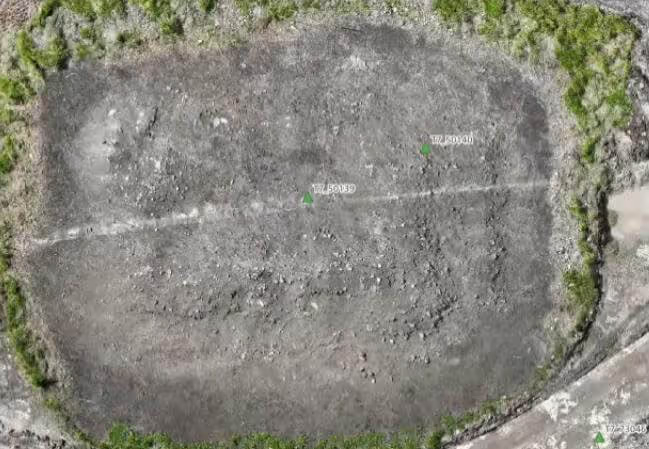
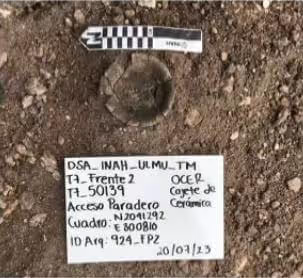
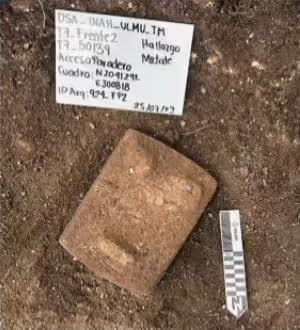
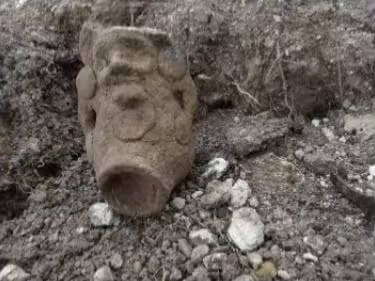
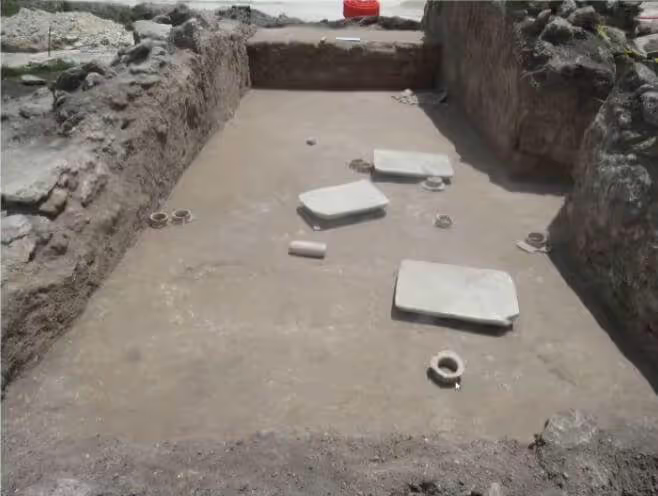
The new findings made by the Tren Maya Archaeological Salvage Project enrich the surroundings of previously discovered archaeological sites. In addition to the construction of stations, rights-of-way, and service roads, Tren Maya construction workers are also carrying out complementary works, such as access roads. During the layout of the access road to the Kohunlich stop, in Section 7, Front 2, an L-shaped structure was discovered in the middle of the route, which possibly dates back to the Early Classic period.
The archaeological study of the discovery was conducted by Dr. Manuel E. Pérez Rivas and his team. The National Institute of Anthropology and History (INAH), the INAH Quintana Roo Center, and personnel from the Ministry of National Defense began the archaeological salvage work at the access road to the Kohunlich stop.
When the excavation began, archaeologists identified a well-defined southeastern corner of the monument, leading them to realize that the settlement consisted of two structures: a square platform at the surface and an upper L-shaped construction. Due to its size and location, it was decided to preserve this archaeological monument, resulting in a modification of the original access road layout. Using the discovered corner as a starting point, and given the presence of continuous walls, the excavation was expanded in the northern and eastern directions.
Inside the L-shaped structure, the first archaeological materials were found, including ceramic bowls, a fired metate, a metate with three supports, and an anthropomorphic figurine. These objects were discovered at a shallow depth, leading archaeologists to theorize that they were placed as an offering after the structure was abandoned.
As the excavation continued, it was revealed that the upper structure featured a bench, two access points, stuccoed floors both inside and outside, and three vaulted rooms: two in the southern part and a third in the east. Regarding the southern rooms, archaeologists noticed that the structure was divided by a wall to separate the two rooms. The southern wall of these rooms was collapsed, and only a corner of the wall was found in place. The presence of debris led the archaeologists to alter their methodology and continue the excavation in layers. This approach allowed them to identify and mark the fall sequences.
In the eastern room, three metates, several pot necks, a fragmented metate mano, and a mortar mano were found. The discovery of pot necks was common during the excavation of the structure, leading archaeologists to suggest that they may have been part of a ritual of sanctification during the abandonment of the structure.
Regarding the lower structure, a staircase was found at the northern limit, providing access to the courtyard of the upper structure. On the staircase, an offering was discovered, consisting of four metate manos, knives, scrapers, two metate fragments, and a pectoral. The latter material is engraved with a scene.
Once the structures were fully uncovered, the process of creating test pits began. This led to the discovery of a cist marked with a stone, which is approximately one meter deep.
In the third room, located to the east, archaeologists observed what appeared to be the trace of a cist, but it turned out to be a burial. The burial was excavated to depth, and the complete skeletal remains of an adult were recovered, lying on its back.
The discovery of the monument not only led to an in-depth investigation of the site but also posed a threat: exposure to rain began to affect the structure, causing parts of the walls to collapse. To safeguard the integrity of the site, consolidation work was carried out.
The area was cleaned, and the excavation stones were removed. The rocks of the walls that remained intact were left in place, while those likely to collapse were removed for later reintegration. The reconstruction yielded notable results, such as the recovery of the maximum height of the southern part of the platform and the preservation of the stucco on the interior wall. These were moistened with limewater to prevent them from separating from the original wall.
The reconstruction work, supervised by INAH and the INAH Quintana Roo Center, with support from personnel of the Ministry of National Defense (SEDENA), is still ongoing, with the intention of ensuring that these magnificent structures continue to awe their descendants, visitors, and researchers from present and future generations.